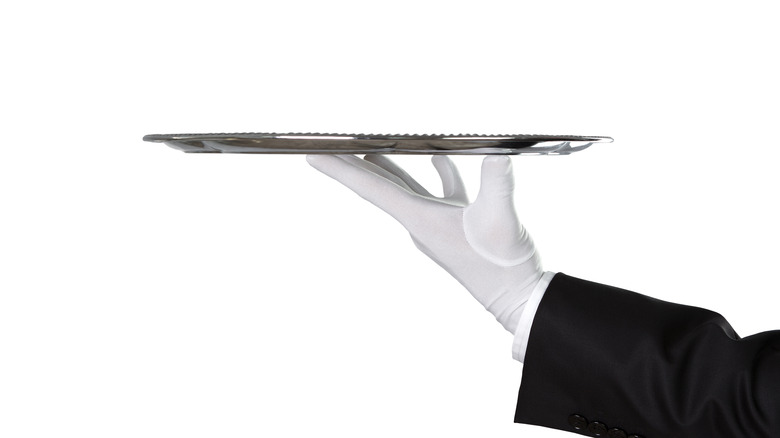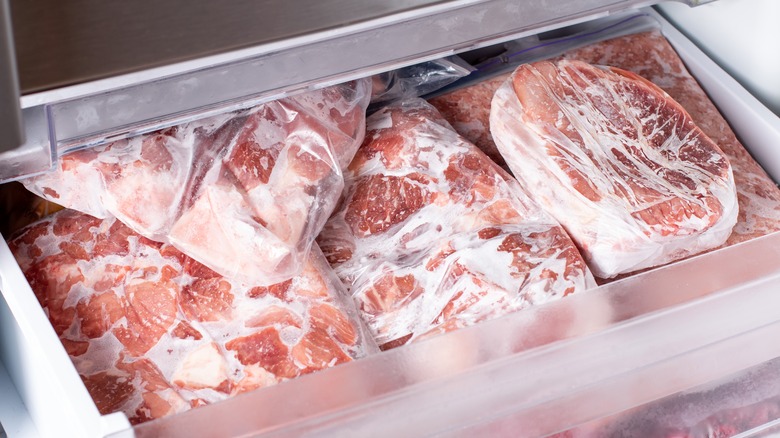Why You Should Be Defrosting Meat On An Aluminum Tray
Meat is no doubt a staple in the typical Western diet, and so much is produced that it often has to be frozen to increase its longevity. But at some point or another, amongst the hustle and bustle of your busy schedule, you've likely forgotten to take it out of the freezer early enough before dinner to let your meat defrost. You probably rolled your eyes and groaned as you stood at the sink running it under cold, wasted water for ten minutes, tossed it in the microwave in intervals to make up for the lost time, or eventually gave up and ordered takeout. While these tricks may seem relatively convenient, they may not be the safest options, nor will they result in an overly tasty meal.
If only there was a gadget, easy to use and convenient to store, that could relieve your frustrations. Enter the defrosting tray, a nifty kitchen utensil said to be the solution to all your outdated defrosting issues.
How the defrosting tray works
The key to any defrosting tray is a metal base — specifically made of a heat-conducting metal such as aluminum. Thermodynamics explains that when one object of a specific temperature touches an object of a different temperature, the heat from one object will flow to the colder, and vice versa, until both are of equal temperatures, according to The Spruce Eats. Thus, when a frozen chicken breast is placed on a heat conducting material at room temperature, it will eventually become room temperature, reducing defrosting time even up to 30% (per Serious Eats), making for a much easier cooking process and likely tastier results.
There are important tips to keep in mind when using your defrosting tray, the first being related to food safety, i.e., whether your meat is spoiled. According to Price of Meat, while defrosting any sort of meat at room temperature for too long, it is at risk of developing food-poisoning bacteria at a higher rate. In order to avoid this, Price of Meat recommends only thawing thinner slices of meat, because the thawing rate will increase. Also, consider wrapping the frozen food in a plastic bag or wrap to minimize the liquid and bacteria left on the tray from the melting process.

